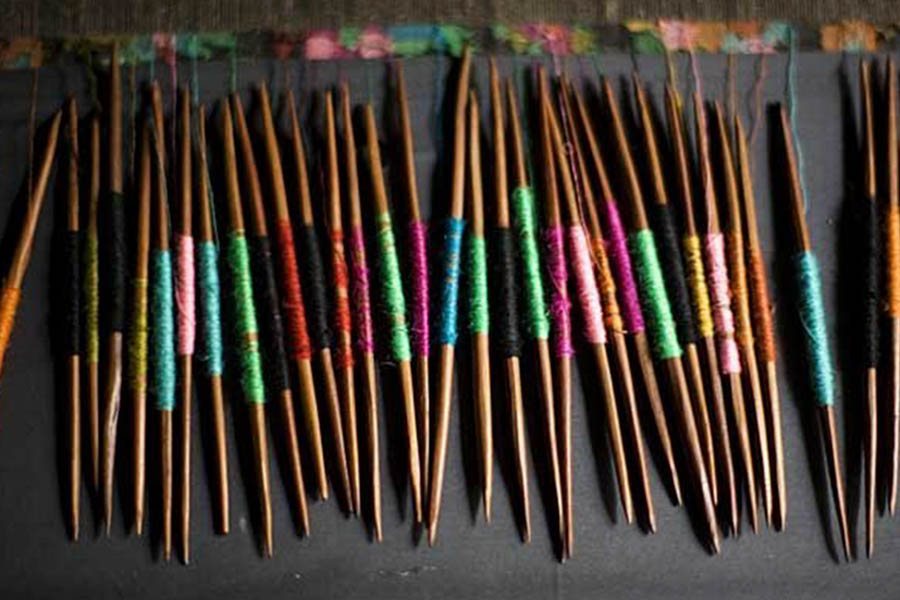Reviving our handloom heritage
There is a great revival story unfolding in the country’s handloom industry, thanks to today’s spirited youngsters who want to go back to their roots.
The Indian youth are supporting the cause of handlooms, both offline and online, like never before. They are not just enriching their wardrobe with the vibrant fabrics of the country, but they are also supporting sustainable fashion and promoting Indian culture and heritage in many ways. With movements and social media communities like Friends of Handloom, Handloom Saree Lovers , Handlooms and Handmade and I Wear Handloom Saree paying a glowing tribute to the magic of handwoven fabrics, the centuries-old industry is finally getting its due. Well, the craft deserves all the attention it is getting now and more!
The scenario today is a far cry from what it was in the not-so-distant past when the sector was in dire need of resuscitation. Of course, a lot more needs to be done to sustain the industry, which is an integral part of the rural fabric of the country.
A little bit of history
Handloom weaving is perhaps one of the oldest family-based Traditional industry in the country. The history of the handloom dates as far back as the Indus Valley civilisation and the Mughul era. Excavations in Mohenjodaro led to the discovery of spindles and spindle whorls. Weaving styles and spinning materials find mention in Vedic literature, Ramayana and the Mahabharata. In fact, spinning, weaving and dyeing techniques were said to be advanced in the Vedic period. Poets in the Mughal court seem to have made references to the famous Indian muslin, calling it ahrawan (running water) and shabnam (dew).
The edge the industry holds
The Indian handloom industry is as vast and varied as the country’s culture itself. You will find a different weave in every nook and corner of India. Every state and region in the country has developed its own traditional design and craft, which have been passed on from generation to generation.
From the Ikat sarees of Orissa, the Pashminas of Kashmir and the Kanjivaram Sarees of Tamil Nadu to Ilkal in Karnataka and the Muga saris of Assam, each handloom sari has a unique warp and weft, reflecting the creativity and skill of the weaver and the cultural nuances of the region.
Although the craft is practised mainly for livelihood, there have been many innovations too, some of which have won the industry many accolades and awards.
The strength of the handloom industry lies in its intricate craftsmanship, which cannot be replicated in the power loom. The handloom industry is less capital intensive, uses minimal power, is eco-friendly, open to innovations, and adapts well to the needs of the market.
While fast-fashion brands offer attractive price points for consumers, the magic of handlooms is unparalleled on several counts: patterns, texture, design, sustainability and comfort.
Numbers at a glance
India is home to the world’s largest number of handloom weavers. With over 43 lakh people involved in weaving and allied activities, the sector is second only to agriculture in terms of employment.
- About 95 per cent of the world’s handlooms are from India.
- There are about 2.3 million handlooms in India, with major centers in Andhra Pradesh, West Bengal and Madhya Pradesh.
- The handloom industry contributes about 23 per cent of the total cloth produced in the country.
Need for support
The industry is at a critical juncture now where it needs tremendous support from all stakeholders. The government is doing its bit for the resurgence of khadi and handloom and handwoven fabrics. The Make in India and Khadi-focused movements and the creation of the India Handloom brand to ensure authenticity and quality are abetting the cause to a large extent.
Going forward, the industry needs more sustained investments in the form of finance, incentives, training, marketing and technology upgradation (such as modernisation of pit looms and pneumatic looms, high-speed automatic looms, shuttle-less weaving and multiphase weaving technology). These measures will reduce the drudgery of weavers and improve their efficiency and the quality of fabric and also ensure the second-generation takes to handloom weaving.
It is heartening to see fashion icons and leading designers of the country becoming flagbearers of handlooms, at red-carpet events and on the ramp. This thought needs to percolate among consumers at large. The priorities and mindsets of all of us should change. After all, it is our responsibility to cherish and preserve this timeless tradition for generations to come.

